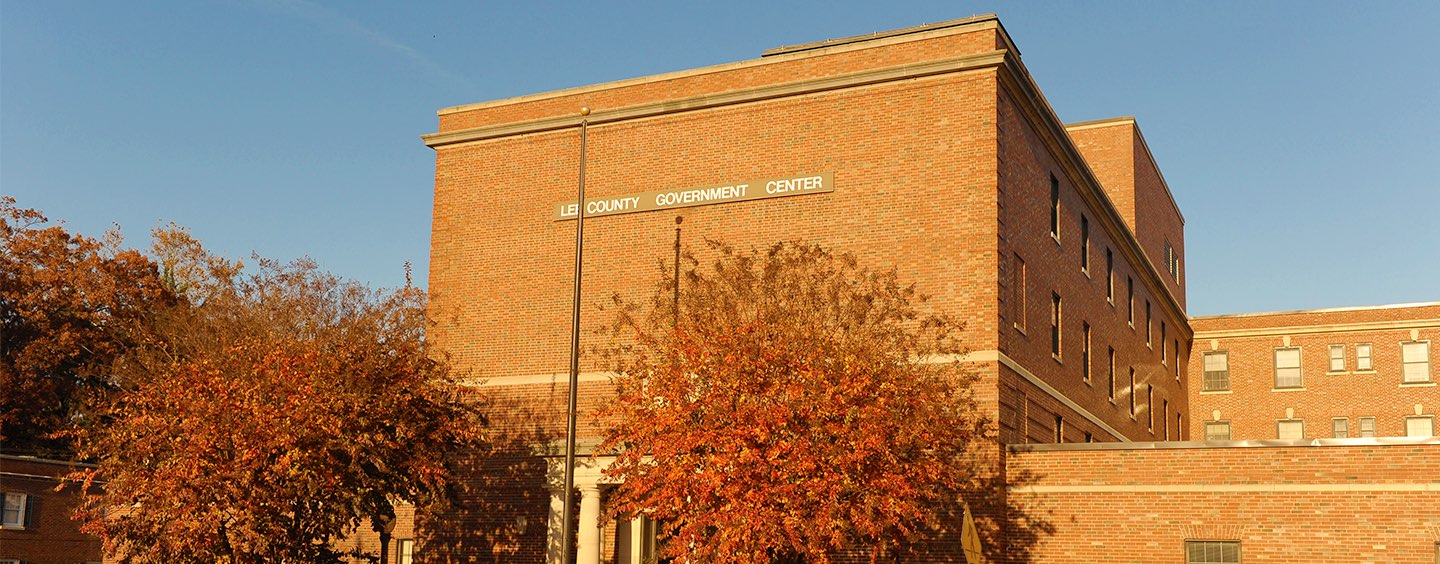What began as a small, rural airstrip at the northern end of Lee County has blossomed into an economic engine with a $61 million annual impact on the region
By Gordon Anderson
In 2014, Geoff Myers was living in Creedmoor, a town of a little more than 4,000 residents just across the Wake-Granville county line north of Raleigh. Myers had been an avid aviation enthusiast for years, but had nevertheless recently come to the conclusion it was time to sell his small plane. It had become decidedly expensive to own.

“It cost me $30,000 to buy, and I probably put another $10,000 into it each year after that in ongoing maintenance,” explained Myers, who is today the president of the 600-member strong Wings of Carolina Flying Club, based at the Raleigh Executive Jetport in northern Lee County. “So I decided to sell the plane and started looking for other places to fly.”
That’s how Myers became acquainted with not just Wings of Carolina, which he now helms as president, but also the Raleigh Executive Jetport (Raleigh Exec for short), which is essentially just across the street from which he now lives. Wings of Carolina owns 14 planes and leases another which are all available for pilot members to rent at affordable rates.
“Every second Saturday, (Wings of Carolina does) a cookout,” he said. “It was April of 2016 and we came down for the day. We knew at the time that we wanted to move into a bigger house, and I knew I wanted to be closer to an airport. We saw the neighborhood that they were building right nearby and just fell in love. About six months later we moved in.”
Wings of Carolina accounts for a large portion of the aviation activity at Raleigh Exec, a general aviation (read “non-commercial”) facility which has stood off Farrell Road near the U.S. 1 intersection since 1999 (for years before that, the old Sanford-Lee County Airport occupied a much smaller space off Tramway Road near where Southern Lee High School is now located), but even Myers will tell you that so, so much more goes on there every day. The airport itself employs about a dozen full and part time workers. Multiple businesses are located in the various hangars sitting on the nearly 700-acre footprint, as is a regional maintenance base for the North Carolina Forest Service.
“The whole airport is a small community in and of itself,” Myers said. “My little flying club employs four people, but there are dozens of people connected with the club that work out there. We’ll frequently go down to the Forest Service and borrow parts from them, or they’ll borrow parts for us. Everybody knows everybody.”

ECONOMIC JET ENGINE
To be clear, Raleigh Exec is more — far more — than just the sum of its parts. And even though it’s not a place you can go to catch a commercial flight out of Lee County, the average citizen feels its impacts every day, whether they know it or not.
“You look at it the same way you look at highways or rails or any other type of transportation,” said Bob Heuts, Raleigh Exec’s director since 2016. “But it’s also an asset to the community, just like the community college or our public schools. And this may have an even farther reach, because the people that use this airport are from around here, but that could mean a 30 mile radius. And if those people weren’t using it, they’d be going somewhere else.”
A WRAL report from April 2021 estimated Raleigh Exec’s annual economic impact at an eye-popping $61 million, all while supporting as many as 400 local jobs. Additionally, its mere presence serves as a catalyst for economic development. Heuts — formerly in economic development himself with the old Lee County Economic Development Corporation in the mid to late 2000s — and Jimmy Randolph, CEO of the Sanford Area Growth Alliance, both said Raleigh Exec has been at the heart of any of the blockbuster jobs projects announced (think Pfizer, Bharat Forge, Astellas) by Sanford and Lee County’s government and business leaders in recent years.
“There’s an economic development checklist most of these companies have, and if you can’t check off that you’ve got an airport with X-distance, you may get eliminated from consideration before you even know it,” Heuts said.
“Companies don’t just think about highway transport,” Randolph added. “So the fact that we have a general aviation airport is an unquestionable asset. It’s five minutes from the Central Carolina Enterprise Park, so when Pfizer is having their strategic planning meetings that might involve several facilities, we’re on the map as a potential location because they can fly right into the Jetport. Otherwise we’d miss out.”
The positive feelings about Raleigh Exec haven’t always been so widely shared.
When the proposal to move to and expand in the Farrell Road location was first floated in the late 1990s, opposition came not just from nearby landowners, but others who questioned whether the facility would be a benefit only to those with access to a private aircraft — primarily the wealthy, in other words.

Decades on, that perception can still persist — there are usually a handful of such online comments any time The Rant reports on Raleigh Exec — but not so strongly these days. In any case, there’s all kinds of evidence for anyone willing to see that “a playground for the rich” isn’t a full — or even fair — way to assess the airport.
“There’s no question about it, in terms of tax base and the visibility it’s given to the Lee County community,” Heuts said. “All that came into play when it was located where it was.”
The notion is further disabused by Raleigh Exec’s inarguable openness — anyone can walk through the front door and out onto the runway to have a look around any time the facility is open, and a new 14,500 square foot terminal which opened in 2019 features an observation deck on which visitors can sit and watch the dozens of airplanes which come and go each day. While COVID restrictions temporarily halted the airport’s annual family day celebration in 2020, 2021 saw its return that October and plans are in place to continue the event in the future. Add to that Wings of Carolina’s Second Saturday cookouts, and the picture is one of inclusion for anyone interested, whether they’re capable of or even interested in purchasing an airplane or not.
“We had a school field trip out here and when I told (the students) they could come out here any time they wanted to watch from the observation deck their faces lit up and they were like ‘really?’” said Sarah Staut, the airport’s office manager. “They couldn’t believe it.”
“Family Day or any kind of event is important to us because we really want people to understand what’s going on out here,” Heuts added. “That kind of education is important.”
While Raleigh Exec’s physical features are impressive (and important) — the 6,500 foot runway is capable of handling some of aviation’s largest craft, and projects finished in recent years include the installation of 30 new T-hangar units, the addition of large corporate hangar spaces and 27 new aircraft parking spots, a widening of the taxiway to foot feet, the new terminal in 2019, and much, much more — perhaps the most interesting aspect of the facility is its ownership structure.
Overseen by the quasi-governmental Sanford-Lee County Regional Airport Authority, any tax revenues which come from aircraft and other facilities based at Raleigh Exec go back into a reserve fund which allows, for the most part, for the airport to be self sustaining.
“Whenever money is spent out here, you’re reinvesting in yourself,” Heuts said. “This is providing a public service.”

The Airport Authority was set up the way it is in large part because when Raleigh Exec opened in 1999, it was now outside the Sanford city limits, making it difficult for the city to benefit from tax revenue generated there. Instead, the agreement means all those tax revenues go back to the Airport Authority itself. That’s an agreement unique at least in North Carolina, Heuts said.
But it also doesn’t mean outside funding isn’t sometimes beneficial or even necessary. But that’s most likely to come in the form of state Department of Transportation moneys like the $4.77 million Raleigh Exec received in September 2021 to improve the taxiway or the $9 million allocated for capital improvements in North Carolina’s long overdue state budget passed back in November.
Those improvements and more — a map on the wall in the terminal’s conference room shows space for new hangars and other continued upgrades set for the near future — will most certainly play a role in the airport’s continued success. But that continued success for the airport is sure to mean continued success for the community as a whole — whether with regards to more announcements in the future about international companies locating or expanding here, continued residential development or any number of other factors.
“Each of the major (economic development) projects we’ve had in the last several years has had private corporate aircraft involved,” Randolph said. “But the personal side of it is that for the executives involved, it can be a factor in their decisions about where to live and where to raise their families. There’s not a better (general aviation) airport in the periphery of the Triangle, and if we’re going to have the kind of residential development we want, that’s important to these people. They might choose to live elsewhere if they weren’t able to fly. But beyond that, (Raleigh Exec) just communicates something about the type of community they’re looking to locate in.”

THE MIDDLE GROUND
Myers, the Wings of Carolina president, can see those successes firsthand on a smaller scale. While he said he tries to fly a club-owned plane at least two or three times a month, he also sees in real time the smaller picture, which is that Wings of Carolina and Raleigh Exec draw new people in with great frequency.
“My vice president is a guy who got trained to fly out here, and then joined Wings of Carolina out here, and then he ended up buying a plane that’s now based out here,” he said.
And in his role as Wings of Carolina’s president, Myers has had the opportunity not just to enjoy Raleigh Exec, but also to see how it stacks up against similar facilities across the nation. He recalled purchasing a small club plane in 2020 from a seller in Texas and flying it back to Lee County, and what he saw along the way.
“I stopped at seven or eight airports ranging from Baton Rouge, Louisiana, which is about equivalent to RDU, to a small airport in the middle of nowhere in Mississippi,” he said. “And so we have sort of a nice little middle ground between a much bigger commercial airport and something very small like that. There’s maintenance on the field, there’s always somebody there, but it’s not so big and complex that you have to deal with all the issues you would coming in or out of a place like RDU.”
From his perspective, Myers said he appreciates Raleigh Exec and the Airport Authority’s stance — which he called “not shy” — when it comes to “wanting to be the place where the private operators come in and out.”
“They’ve made a lot of progress along those lines,” he said. “You can go on their website and look at their master plan, and you can just see them chipping away at it. You need a certain amount of community to have a community, if that makes sense. Some of those little airports that have one or two planes tied down — they’re never going to be that big. Wings of Carolina is only out here because the airport is here to support us, but I think we’re able to support the airport almost as much.”























